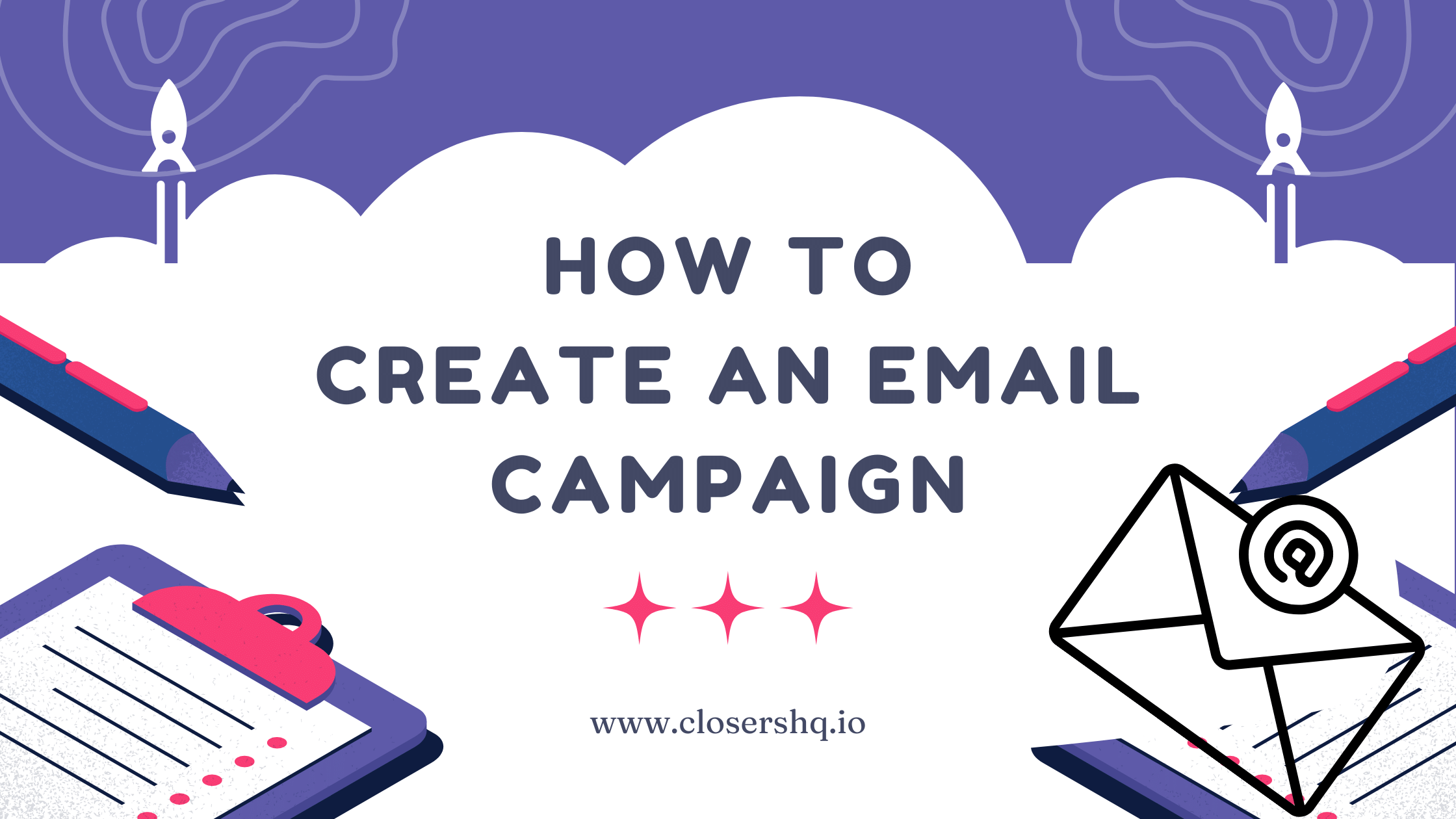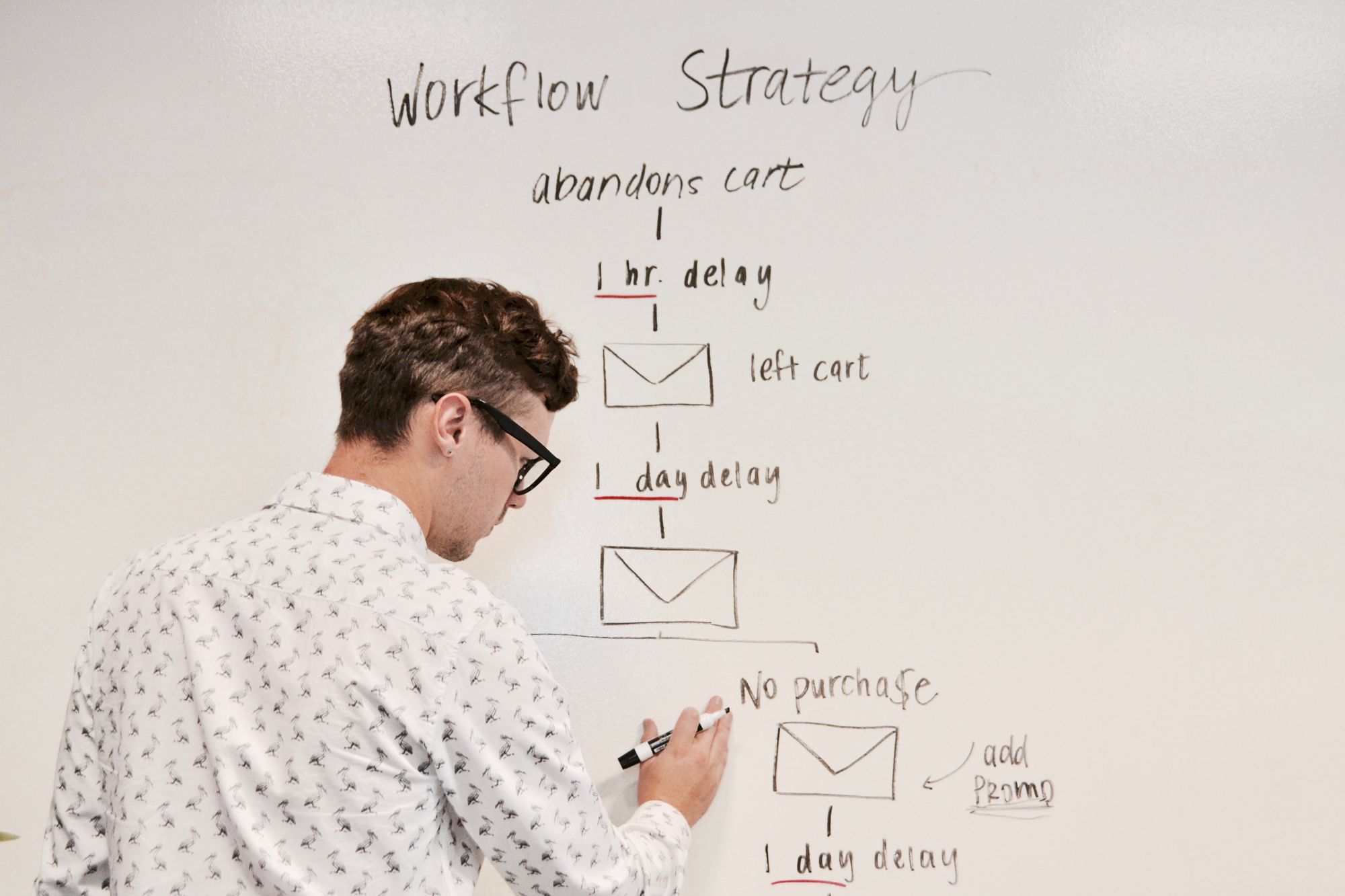Are you ready to launch your first email marketing campaign? If so, great! Email campaign is a powerful tool for driving traffic to your website, building customer relationships, growing your customer base, increasing brand awareness, and boosting sales. However, it's often seen as an intimidating tool that is difficult to use. In this blog post, we will break down email campaigns into bite-sized pieces and show you how easy it can be to create a successful email campaign that your customers will love. To help you get started, we've put together a step-by-step guide for launching your first email marketing campaign. Just follow the steps below, and you'll be on your way to success!

1. Define Your Goals: Before you launch your campaign, take some time to think about what you want to achieve. Do you want to increase website traffic? Drive sales or boost customer loyalty? It would be best if you decided what your goals are and how you want to measure success in order to determine who the audience is for your emails, how many emails you want to send, how long your campaign will be running for, and so on. Once you know your goals, you can create a campaign that’s designed to achieve them. Once you have your goals in mind, you can start to develop your strategy.
2. Define Your Target Audience: Who is your target audience? Answering this question will allow you to create an email list. This might seem obvious, but many businesses neglect this step and end up with an ineffective campaign because they don't have a list of contacts to send their message to. There are some lead generation tools out there that can help you get quality leads that suit your taste.
3. Develop Your Content: What kind of content will you include in your sales copy, and how often will you send emails? Now that you have a plan, it's time to start developing your content. Your content should be relevant to your target audience and align with your goals. Make sure to include a call to action in each email, so your subscribers know what you want them to know or do.
4. Choose a platform: There are many platforms out there that you can use for your email campaign; however not all platforms are created equal. You need to choose the platform that best suits your needs, whether for sending emails or tracking opens and clicks on links within emails.
5. Send the first email: Once you have decided on all this information, it's time to send the first email that will kick off your new campaign.
6. Measure success: Email marketing can be an excellent way of keeping track of everything that's happening on your website. It can also be a great tool to help you measure your campaign's effectiveness because most email campaign tools usually provide you with analytics that enable you to know what proportion of your emails were received, opened, replied to, or the receiver clicked a link, etc.
7. Keep it going! Email campaigns are often designed as monthly or quarterly, so keep your momentum up and don't let any email opportunities slip by. Depending on the tool or service you are promoting and the response of your audience, you should determine the appropriate frequency of sending emails.
Email campaign tools
Email campaign tools are powerful software businesses can use to send mass email campaigns to reach a wider audience and promote their products or services. Mass emailing can be applicable in sending many different types of emails, such as special offers, email newsletters, transactional emails, promotional emails, and other essential material to subscribers.
Email campaign tools can also segment subscribers into different groups so businesses can send targeted emails to specific groups of people. It can be used to promote sales, events or simply to keep in touch with customers. Such software typically includes features like templates, list management, scheduling, and reporting.
Benefits of Email Campaigns
Email campaign is a powerful tool for staying in touch with your customers and growing your business. There are many advantages of sending email campaigns for businesses of all sizes. These include:
- It is an easy and cheap way to reach a large number of people in one go: Perhaps the most obvious advantage is that email is an inexpensive way to reach a large audience with relatively little effort. All you need is an email list and a good email campaign platform, and you're good to go! Well, provided you can write a good email copy too.
- Cost-effective: Email campaign is one of the most cost-effective marketing tools available. In fact, it can be completely free if you use a service like MailChimp.
- It offers many more creative content opportunities: It provides a way to maintain constant contact and keep your customers and prospects updated on your latest products, services, and promotions.
- It is very measurable. Most email campaign tools allow you to track important metrics regarding your email campaign and provide information such as total emails sent, percentage that landed in spam/inbox, open and reply rates, etc.
- It can be tailored to the recipient's needs: Email can be highly personalized, which allows you to target specific segments of your audience with customized content that helps to build relationships and loyalty.
- It is a way to preserve your brand as it is accessible even if the recipient doesn't buy your product or service: Email campaign can help you build and maintain relationships with your customers and prospects by providing a way to stay in touch regularly.
- It can be used in conjunction with other forms of marketing, like Facebook, Google AdWords, and social media, to make the most of your marketing efforts.
- There are many automated email campaign platforms, and you could also pay for email campaign services to handle your campaigns for you while you focus on other important tasks.
- Finally, email campaigns can be an effective tool for generating leads and driving sales. When used correctly, email campaigns can be a powerful tool for growing your business.
The Downside of Sending Email Campaigns
Email campaign can be a very effective way to reach out to potential and current customers. However, some disadvantages to using email campaigns should be considered before deciding if this is the right sales or marketing technique for your business.
One of the most significant disadvantages of sending email campaigns is the potential to end up in the spam folder: This is especially true if you send mass emails to many people. To avoid this, you must ensure that your emails are well-written and relevant to the recipient. Avoid spammy email subject lines that are too catchy or flashy. You could also land in spam if you have a poor sender reputation which is common for new mailboxes or domains.
Email warmup could help you in this case. It is one of the best strategies for running successful email marketing campaigns because it helps increase deliverability, open rates, and click-through rates. This involves automated simulation of positive sending behavior on your new mailboxes before you start using them to send campaigns. This article is a detailed guide on strategies and best practices that can help you evade the spam folder when sending email campaigns.

Another downside to email campaigns is that it can be time-consuming to create quality content. Yes, it is a time-consuming process to design and send emails. You need to spend time crafting your emails, and then you need to make sure that they are delivered to the right people. This can be a lot of work, especially if you have a large list of subscribers. If you are not careful, your emails can come across as being too salesy or promotional. Instead, focus on offering value to your audience, making them understand how your offer can be valuable to them.
One other potential disadvantage of email campaigns is that it can be challenging to track your campaign results. It can be difficult to measure the effectiveness of your campaign. For example, it can be hard to tell how many people actually read your emails and how many took action after reading them. This can make it challenging to determine what areas are productive and require you to concentrate your efforts. This is why it's important to use software that can provide analytics and insights to help you make informed decisions regarding your email campaigns.
Another disadvantage is that it might be too intrusive for some people, especially if they are bombarded with emails from many companies. Email spamming can lead to unsubscribes and lower customer engagement. This can make them unsubscribe from all emails, which means losing a potential customer forever!
Email campaigns can be effective marketing tools; however, they are less personal than other channels, such as social media and in-person interactions. While email campaigns have the potential to reach a broad audience, they lack the personal touch that comes with more direct contact. Social media and in-person interactions allow for more of a two-way conversation, allowing marketers to build relationships and engage with their target audiences more meaningfully.
Additionally, social media channels allow for more creativity and customization, allowing marketers to customize their messaging to be more tailored to their target audiences. Similarly, in-person interactions can be compelling in building relationships and trust.
Emails can be easily ignored if they are not interesting or relevant to the recipient.
When sending emails, it is important to ensure that your email copy is both exciting and relevant to the recipient. The email will likely be ignored if the message fails to meet those criteria. It is important to keep the recipient in mind when crafting an email and ensure that the message is concise, to the point and professional in both its tone and content. Additionally, be sure to include an intriguing email subject line that will draw the recipient in and make them want to open the email. Taking these steps will help ensure that the message is read and considered, not simply ignored.
Conclusion
Email campaign has been around for a long time, and it's still going strong. It's a cost-effective way to promote products or services, and there are many ways to make the most of this type of marketing.
Some people believe that email campaign is obsolete, but this couldn't be further from the truth. It's just evolving into something different than what we've seen before. Campaigns are becoming more innovative, more personal, and more automated. Email campaigns have become about more than just sending emails to your new customers - it's also about nurturing relationships with your current ones. Always put in the time and effort that is required to achieve the desired results.
